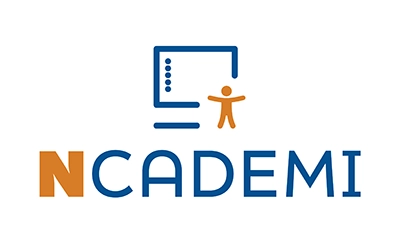The Quality Indicators are grounded in a fifteen-year foundation set by the following projects funded by the Office of Special Education Programs (OSEP): the Accessible Instructional Materials (AIM) Consortium, the National AIM Center, and the National Center on Accessible Educational Materials for Learning (AEM Center).
Led by CAST and the fifteen states of the AIM Consortium, the development of the original Quality Indicators for the Provision of AIM (AIM Quality Indicators) was guided by the research-based Quality Indicators for Assistive Technology (Reed et al., 2024). The AIM Quality Indicators were developed to support state educational agencies with meeting new requirements in the 2004 reauthorization of the Individuals with Disabilities Education Act (IDEA). Specifically, the AIM Quality Indicators outlined actions for states, in coordination with local educational agencies, to provide accessible formats of print instructional materials for eligible students in a timely manner.
In 2014, OSEP transitioned to the term “accessible educational materials (AEM)” and the AEM Center, led by CAST, revised the AIM Quality Indicators. The Quality Indicators with Critical Components for the Provision of AEM (AEM Quality Indicators) responded to the increase in adoption and use of technology-based materials in schools. The AEM Quality Indicators were again revised and published in 2020 by the AEM Center at CAST in partnership with eight states (National AEM Center, 2020).

The current Quality Indicators serve as the next generation of recommended actions for state and local educational agencies. Developed by the National Center on Accessible Digital Educational Materials & Instruction at Utah State University (NCADEMI, pronounced “N-cademy”), the Quality Indicators are informed by the research base of previous iterations (Shaheen & Curry, 2023; Shaheen, 2024). Cycles of feedback were provided by representatives from state and local educational agencies with experience implementing the 2020 AEM Quality Indicators, as well as members of NCADEMI’s National Advisory Council.
Development Timeline
A 15+ year foundation for building sustainable systems for the selection, procurement, creation, evaluation, and use of accessible educational materials.
2009 AIM Consortium Launches
The Accessible Instructional Materials (AIM) Consortium is established with fifteen states.
2012 AIM Quality Indicators are Published
The first version of the Quality Indicators for the Provision of AIM is published, supporting state educational agencies in meeting IDEA 2004 requirements through coordination with local educational agencies.
2014 OSEP Transitions “AIM” to “AEM”
OSEP transitions the terminology “accessible instructional materials (AIM)” to “accessible educational materials (AEM),” reflecting a broader scope beyond print instructional materials.
2016 AEM Quality Indicators are Published
The Quality Indicators with Critical Components for the Provision of AEM is published, responding to increased adoption of technology-based materials in schools.
2020 AEM Quality Indicators are Revised
In partnership with eight states, the Quality Indicators with Critical Components for the Provision of AEM was published.
2025 Current Version of the Quality Indicators
The Quality Indicators for the Provision and Use of Accessible Materials in PreK-12 Systems represents the next generation of recommended actions informed by research and feedback from the field.
